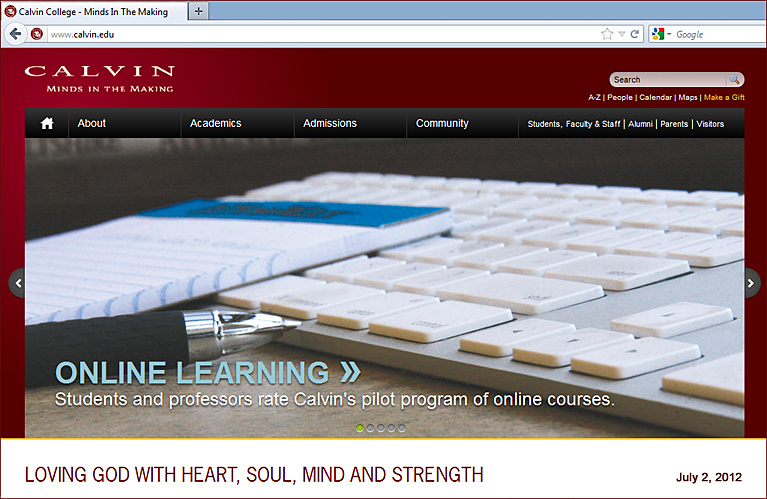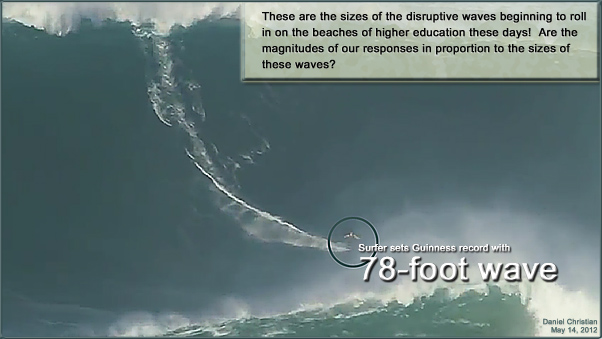![The-Living-Class-Room-Daniel-S-Christian---July-2012 The Living [Class] Room -- by Daniel Christian -- July 2012 -- a second device used in conjunction with a Smart/Connected TV](http://danielschristian.com/learning-ecosystems/wp-content/uploads/2012/07/The-Living-Class-Room-Daniel-S-Christian-July-2012.jpg)




![The-Living-Class-Room-Daniel-S-Christian---July-2012 The Living [Class] Room -- by Daniel Christian -- July 2012 -- a second device used in conjunction with a Smart/Connected TV](http://danielschristian.com/learning-ecosystems/wp-content/uploads/2012/07/The-Living-Class-Room-Daniel-S-Christian-July-2012.jpg)
From DSC:
Readers of this blog will know that I am pro-technology — at least in most areas. However, as our hearts can sometimes become hardened and our feet can sometimes find themselves on slippery ethical ground, we really need hearts, minds, and consciences that prompt us to care about other people — and to do the right thing as a result of that perspective.
Example articles that brought this to my mind recently include:
7 sinister technologies from Orwell’s 1984 that are still a threat — from dvice.com by Hal Rappaport
Excerpt (emphasis DSC):
Technology is a wonderful thing, but in the words of Spider-Man’s Uncle Ben, “With great power, comes great responsibility.” If we are not careful, the technology we know and love could be used against us, even subtly. In the year 1984, Apple thought IBM was the bringer of “Big Brother.” In reality, the technology of today better resembles George Orwell’s dystopian vision than a 1980s era PC.
Every day we are in the process of becoming a more connected society. With social networks, cloud computing and even more specific, less-thought-about tech such as Internet-connected home surveillance systems, we may find ourselves in a delicate balance of trust and paranoia.
…
While we are grateful that we don’t live in a world as bleak as Orwell’s Oceana, it’s clear that the technology now exists to make his world possible if we let it. Keeping our paranoia in check, we should all be mindful of our technology and how it’s used. Security is a good thing and so is saving money, but consider how much of each your personal freedom is worth.
Wiping away your Siri “fingerprint” — from technologyreview.com by David Talbot
Your voice can be a biometric identifier, like your fingerprint. Does Apple really have to store it on its own servers?
Excerpt:
“What I’ve discovered through building and running very targeted online ad campaigns using this data is that users respond favorably to ads that are more targeted, but only if the ads don’t make it clear that I’m targeting sensitive information about them,” he said. “What’s most interesting, and what I’m learning, are which attributes are considered too creepy, and which ones are acceptable.”
“Google Now” knows more about you than your family does – are you OK with that? — from readwriteweb.com by Mark Hachman
Excerpt (emphasis DSC):
Google Now aggregates the information Google already collects about you on a daily basis: accessing your email, your calendar, your contacts, your text messages, your location, your shopping habits, your payment history, as well as your choices in music, movies and books. It can even scan your photos and automatically identify them based on their subject, not just the file name (in the Google I/O demo, Google Now correctly found a picture of the Great Pyramid). About the only aspect of your online life that Google hasn’t apparently assimilated yet is your opinions expressed on Google+. But that’s undoubtedly coming.
Social network privacy settings compared — from techhive.com by Nick Mediati
Excerpt (emphasis DSC):
It should go without saying that protecting your privacy online is kind of a big deal. While people are generally good at not giving out their personal information to just any website that asks for it, those same people can be found filling their Facebook accounts with everything from their birthday to where they live and work. Putting this sensitive information onto a social network not only leaves your data exposed to third-parties (advertisers and so forth), but also to anyone who happens across your profile.
Facebook, Google+, and Twitter all have settings that let you tweak what others can see on your profile—but navigating them can be a bit of a mess. Not all social networks give you complete control over your privacy online, so here’s a quick overview of what Facebook, Google+, and Twitter allow you to do.
U.S. companies lost at least $13 billion to espionage last year — from ieee.org by Robert Charette
Google Glass & Now: Utopia or Dystopia? — from extremetech.com by Sebastian Anthony
Excerpt (emphasis DSC):
If you didn’t watch the Google I/O keynote presented by Vic Gundotra, Hugo Barra, and Sergey Brin, let me quickly bring you up to speed. Google Now is an Android app that uses your location, behavior history, and search history to display “just the right information at just the right time.” For example, if you regularly search for a certain sports team, Now will show you a card with the latest scores for that team. When Now predicts or detects that you’re leaving home in the morning, it will display a card with any relevant traffic information. If you have a lunch meeting in your Google Calendar, Now will show you the route you need to take to get there — and when you need to leave to get there on time. If you search Google for an airline flight, Now will show a card with the flight details (and any delays).
Big e-reader is watching you — from PaidContent.org by Laura Hazard Owen
Why privacy is big business for trial lawyers — from technologyreview.com by Antonio Regalado
Tech companies that make privacy mistakes can expect a lawsuit.

Legal discovery: The billboard is imaginary, but the trend is real.
Trial lawyers are ramping up lawsuits over online privacy breaches.
Flickr Creative Commons | AdamL212 and istock/stocknroll
On 7/16/12:
On 7/23/12:
From DSC:
I’m a member of the team working at Calvin College to get online learning implemented for the College. I’m grateful for — and proud of — our team and what we’ve been able to accomplish thus far. (BTW, I use the word pride knowingly but carefully.) My hope/dream/vision is that people from all over the world will be able to get a solid, Christian-based education at a significantly-reduced price!
Addendum on 7/3/12 from an article I wrote for EvoLLLution.com (for LifeLong Learning):
Establishing better collaboration between the corporate world and higher education [Christian]
In the near future, perhaps we could have second screen-based activities whereby corporate leaders are giving TED-like presentations or expressing the current issues in their worlds via a program on Smart TVs, and the students are communicating and collaborating about these presentations via tablets or smart phones. Perhaps there will be electronic means whereby students could submit their ideas and feedback to the presenting companies (and whereby selected ideas could be rewarded in terms of free products or services that the company produces).
From DSC:
My cousin helps Fortune 500 companies innovate and deal with change management-related issues. Something he once said is rather haunting to me now…
“Often when organizations start feeling the pain, it’s too late at that point.” (Think Blockbuster, Kodak, Borders, and many others.)
So that has been the question I’ve been pondering these last couple of years — are we already too late to the game?
Public universities see familiar fight at Virginia — from the NYT by Tamar Lewin on 6/25/12
Excerpt (emphasis DSC):
The tumult at the University of Virginia …reflects a low-grade panic now spreading through much of public higher education.
…
But the 10-point outline she offered — listing state and federal financing challenges, the changing role of technology, a rapidly changing health care environment, prioritization of scarce resources, faculty workload and the quality of the student experience, faculty compensation, research financing and the like — was almost generic, and would have applied to nearly every public university in the nation.
Rebuilding Mr. Jefferson’s University — from insidehighered.com by Kevin Kiley
Excerpt (emphasis DSC):
In a statement before the vote, Dragas said the events of the past two weeks have actually unified the campus around a series of questions it needs to address. “Prior to these events, there seemed to be a roadblock between the board’s sense of urgency around our future in a number of critical areas, and the administration’s response to that urgency,” she said. “Also, many of our concerns about the direction of the university remained unknown to all but a few. This situation has now keenly focused the attention of the entire university community on the reality and urgency of the specific challenges facing the university – most of which, once again, are not unique to U.Va. – but whose structural and long-term nature do require a deliberate and strategic approach.”
University of Virginia: Only the Beginning — from The American Interest by Walter Russell Mead
Excerpt (emphasis DSC):
What we see at UVA this month is just a foretaste of the storm that is coming — a few early raindrops and gusts of wind before the real storm hits. The country needs more education than the current system can affordably supply, and the pressure on the educational system will not abate until this problem is resolved.
Excerpt:
Other information industries, from journalism to music to book publishing, enjoyed similar periods of success right before epic change enveloped them, seemingly overnight.We now know how those industries have been transformed by technology, resulting in the decline of the middleman — newspapers, record stores, bookstores and publishers.
Colleges and universities could be next, unless they act to mitigate the poor choices and inaction from the lost decade by looking for ways to lower costs, embrace technology and improve education.
Ousted Head of University Is Reinstated in Virginia — from the NYT by Richard Perz-Pena
Excerpt (emphasis DSC):
CHARLOTTESVILLE, Va. — Facing a torrent of criticism, the University of Virginia trustees made a stunning turnabout on Tuesday, voting unanimously to reinstate the president they had forced to resign over concerns that the university was not adapting fast enough to financial and technological pressures.
Book Description
Publication Date: June 26, 2012
America is facing a higher education bubble. Like the housing bubble, it is the product of cheap credit coupled with popular expectations of ever-increasing returns on investment, and as with housing prices, the cheap credit has caused college tuitions to vastly outpace inflation and family incomes. Now this bubble is bursting.
In this Broadside, Glenn Harlan Reynolds explains the causes and effects of this bubble and the steps colleges and universities must take to ensure their survival. Many graduates are unable to secure employment sufficient to pay off their loans, which are usually not dischargeable in bankruptcy. As students become less willing to incur debt for education, colleges and universities will have to adapt to a new world of cost pressures and declining public support.
About the Author
Glenn Harlan Reynolds is the Beauchamp Brogan Distinguished Professor of Law at the University of Tennessee. He writes for such publications as The Atlantic Monthly, Forbes, Popular Mechanics, The Wall Street Journal, and the Washington Examiner. He blogs at InstaPundit.com.
Also see:
.
From DSC:
Note many of the relevant categories and tags I put this under — items I’ve been covering for years:

.
From DSC:
Some suggestions for the Development Offices out there…higher ed institutions need more funding for:
The future is not in buildings. It’s on the Internet.
Why iTunes U isn’t seeing massive adoption by universities — from edcetera.rafter.com by Sara Gaviser Leslie
From DSC:
Apple needs to decide how big they want iTunes U to get, how much to invest in it, and how much content creators/providers can do with it. Sara makes some solid points here — and Apple needs to develop their responses/action plans accordingly.
We can’t wait another year for a new ESEA — from ednetinsight.com by Mary Broderick
Mary Broderick, 2011-2012 President, National School Boards Association (NSBA), and the former chair of Connecticut’s East Lyme Board of Education — Friday, April 13, 2012
Excerpt:
For nearly five years, school leaders around the country have urged Congress to make dramatic changes to the No Child Left Behind law. We’re now reaching a critical point where too many schools are being unfairly penalized, community support is undermined, and we’re forced to sacrifice vital subjects that engage students to focus on state tests.
NCLB—the ten-year-old version of the Elementary and Secondary Education Act (ESEA)—marked nearly half of all public schools as “failing” last year, and 100% will be “failing” by 2014. This absurd statistic demonstrates that the law isn’t working the way it was intended. However, because Congress hasn’t seized the initiative to make major changes, school districts are operating in limbo between a flawed law and an unsure future in the direction of federal policy. For our public schools to move forward and for our children to be competitive, the National School Boards Association (NSBA) is pushing Congress to pass a new law this year. NSBA represents the nation’s 13,800 school boards, but there’re thousands of administrators, teachers, and other school staff members who also see the law’s problems firsthand.
EASTON, PA. — A year ago, the notion that Smith College — with a $1 billion endowment, high student demand, and frequently cited educational quality — was raising existential questions, particularly about its economic model, seemed a fairly radical notion.
But an idea that seemed striking in the past — that elite liberal arts colleges might have to make significant changes in the next few years if they are to remain relevant (or present) in the current educational market — is now the hottest topic in the sector.
A conference this week here at Lafayette College entitled “The Future of the Liberal Arts College in America and Its Leadership Role in Education Around the World,” drew more than 200 college administrators, including about 50 college presidents, out of an invite list of U.S. News and World Report’s list of top national liberal arts colleges. Judging by the turnout, the discussion, and the fact that several other conferences addressing these questions are scheduled over the next few months, it’s clear that the questions are on everybody’s mind.
In his opening talk Monday night, Lafayette President Daniel H. Weiss laid out four major challenges facing liberal arts colleges — affordability, public skepticism about the value of a liberal arts degree and college in general, decline in the share of U.S population who fit the demographic patterns of students who traditionally attend liberal arts colleges, and questions about how to incorporate technology into the college and serve a generation of students that is increasingly networked — most of which was addressed in various forms throughout the day Tuesday.
.
From DSC:
Many people haven’t liked the messages that I’ve been trying to get across these last several years:
I am encouraged by this conference — and the turnout of 200 college admins and 50 college presidents — because it appears that this perfect storm within higher ed is now being taken more seriously.
Also relevant:
Rethinking higher education business models — from americanprogress.org by Robert Sheets, Stephen Crawford, Louis Soares
Excerpt:
The theory of “disruptive innovation“—the notion that certain innovation can improve a product or service in such a way that it creates new markets that displace existing ones—was developed and advanced by Christensen in the 1990s. According to Christensen, who has studied the evolution of many industries, disruptive innovation occurs when sophisticated technologies are used to create more simplified and more accessible solutions to customers’ problems—solutions that are often less high performing than previous technologies but whose price and convenience attract whole new categories of consumers. The first generations of transistor radios, desktop computers, and MP3 players are examples. These new solutions—innovations to existing technologies deployed through new business models—gradually improved to the point where they displaced the previously dominant solutions. Christensen’s key point, however, is that new technologies like these cannot achieve their transformative potential without compatible changes in their industry’s business models and value networks, which in turn may require shifts in the standards and regulatory environment.
From DSC:
Given the current rumblings of massive changes that are about to take place (if they haven’t already) within the higher education landscape, each person within higher education that has key strategic and leadership responsibilities should be required to read the two books mentioned below. I assert this because these world-class researchers and authors have discovered and documented phenomenon that is affecting all of higher education at this point in time. Understanding the concepts in these books will help your college or university not only survive — but thrive — in the future.
.
Also:
From DSC:
That article reminds me of a posting on my archived site from 4/11/09:
Let’s reallocate funds towards course development, and then let’s leverage those learning materials throughout the world!

For students: Bring costs waaaayyyyy down and access waaayyy up!
Plus, no more defaulted loans, students could experience richer content, students wouldn’t have to wait as much on financial aid decisions. There would be fewer financial aid headaches; and the resources devoted to figuring out & processing financial aid could be reduced. The issue will be how an institution can differentiate itself in such a new world…but that issue will have to be dealt with in the future anyway.
From DSC:
I haven’t had a chance to carefully read through all of this…but I post it because when we’re losing ~30% of our students (i.e. not graduating from high school even), I’ll do what I can to help stop the enormous waste of talents and gifts out there!
We’re all in this boat together. We can pay the price now…or later.
What needs to change?
Checklist: transforming corporate learning — from Internet Time Blog by Jay Cross
Excerpt:
If you don’t get this, it will get you.
Experience has taught us that making over a training department into a business learning function requires these activities:

